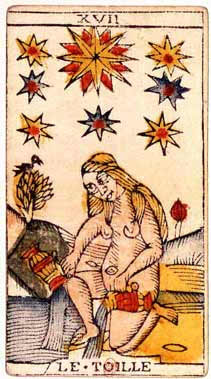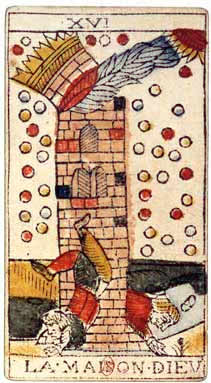
[The page is marked with a Levenger Page nib, phosphorus bronze etched with the proprietary tree, which, upside down, I took to be a “5” on the diary entry for] 25 July 1926
Today at Printemps I saw this notebook in this marvelous embossed binding and couldn’t help myself, I bought it. I am going to keep a diary again. True, I’ll try not to write down my ecstasies over the Seine, and Notre Dame, and the museums, and the Eiffel Tower, and all the rest. All those oohs and ahs have dried up after two weeks in Paris.
But I need a notebook to record the sensations that no one but me has ever experienced before or ever will! Because what is happening to me right now belongs to me alone! Me. I suddenly felt that the old me had begun to vanish, become transparent, and the other life was showing through me. –Mikhail Shishkin’s Maidenhair, translated by Marian Schwartz (2012)
From the Trialeti, a place of wandering, housed in the Georgian museum; not far from Arkady Shaikhet’s 1939 shoot of the peatery—
The golden one, of Colchis may have tied back the tressed centaury of an Achaemenidian tribute modelled by Herodotus (III.97)—
Professing broad hindwings and isosceles discal cells patterning the mystery odonatan, in a necklace of Abbas Kiarostami’s heroine of Copie Conforme (2010), and unique to a dragonfly—
To mention close-witnessed rectal tracheal gills on the Spanish Steps between weddings, from a vantage favoring brusque
Talk of the oak buffet (October 1870)—Stradivari (1644-1737 C.E.) developed his tone woods with such propolis; from a varnished black brood comb safeguarding a bolster of fine down by the muscovy, pato mudo, or mute duck, on its porcelain eggs placed by the Shulamite, who lies in wait for the voice of the beloved that knocks—Bonded wax
Of the coin into a signet etched with lettered N T, nedum teguminis; much more, or still less, one's husk, and the number two, of Gian Lorenzo Bernini’s bozzetti of Teresa of Ávila, from the discalced order the arrow reveals (1622 C.E.), and spared, in his wax (1647-1652 C.E.)—
We added Jasper Johns encaustics of nations; tracing their lineage from Faiyum funerary portraits, and here, the Musa Polimnia (XVI or XVIII century) of an intact medieval fortress city en route to Siena—Over the Ippogeo Melone I del Sodo (450 B.C.E); the negotiated hairpin
Turns, with consoling cypresses, a swell of adjoining tombs of husband and wife, over which Bernini trekked from Arezzo to Piero della Francesca’s Dream of the True Cross (1455 C.E.); later, behind which a curtain whispers, above the Scala Regia, Constantine (1654-1670 C.E.)—The brusque
Steward denies the spirit's corked; far from Rome's ecclesiastical candle soot, here, an open-door nave’s repurposed nightstand contains wild marjoram, wintersweet, the Romans's joy of the mountains, and hosts an alighted brown hairstreak—Four blood moons (2014) oversee its overwintering geodesic eggs among galls and spinous nectaries of staining sloes pricked for épinette and bargnolino—Au fait with all we drink, to forget, while remaining temperate, reading the lees of drying damp malt over the peatery
Imparting smoke, which, in part tans the clubbed man, arrow-felled in the Ötztal Alps thawing his last meal of ibex and plums, legano i denti, twisting the teeth into a grimace (1991)—Herodotus’s
Inhabited world, the feminine oikouménē, contracts Areatha, the Etruscan Ariadne, for her clews, and no more than a ball of cells, than a child from every man—Matured to the mule-drawn ballista from Trajan’s Column (XXXI/XL) a proscribed five Roman feet (147.85 cm), and this thread, paying out our nativities, with the grace of three bids for bottomless Coke bottles groundsped against the more perfect flicker fusion frequency of the dragonfly
Ocellus from the Via Giolitti, before the caved decagonal nymphaeum, and Piranesi engraving, XVI. Tempio di Minerva Medica (1756), midstream between the Domus Aurea (68 C.E.) and the Pantheon (126 C.E.) on which variant dragonflies
Deflect the Sun on sprays of Venus hair, Adiantum—A five-fingered specimen pearling water that morning spree’s as Marie Bashkirtsev with her dogs, and a nevertheless spoken, but unrecorded, Kupala of the summer solstice—The huntsman’s boy; in the 1884 Grand Palais hanging, chewing on a wax
Cord, looped a pole to displace a swarm, and fulfill the Kiev cathedral honey tithe—Herodotus,
As if inclining us to antithesis, the Sun arrived in the constellation Cancer (118.20 degrees), from there, from an extracted peatery
In Drenthe (1883), or June 1961 Berck-Plage, of a transient vein, that kept us from the gamelans of Fête de la Musique, followed by the holiday’s departing of ice-covered scallops of Finisterre—Opposing the mind’s eye's first taken approach of your copper hairpin
And thistle blouse, into that loving, twisted sheet so senselessly pessimistic abroad, and for the nuclear fallout looked-for at home, demurring the brusque
Attempt to outdo, the vermilion-highlighted 31st path; approximately one saeculum, opening to the installation of the Bonnards’s modernized bathroom (1926); south-facing, with ample light firing pyrophones of the faucets—You suggest, with the dragonfly’s
Pterostigma to glide, if not an alteration of arcanum, then of form—What then, if copies of hairpins,
Drawn from run-of-the-mill demoiselles or dowager concubines, betray a hair fetish, and fear of castration, with each follicle responsive to androgens—Declaring the newel post of Rauschenberg’s Coca-Cola Plan (1958) as a hive, or a wig form with rubbed eyes, after the son of Chiron’s wife, to which you pull back into the enclosed space of wordlessness, never mind how the Egyptians styled both sexes with wax
To set under sunlight—All this was yet to happen, Senusret’s pink obelisk; penned in a Goreyesque herringbone, beneath the Piazza’s dolphins whiskered rostra from glanced change—Herodotus
Paid particular attention to hair; Kiarostami’s Report (1977) was banned, for the wife’s uncovered head—Until the incommoded fastening of characters peters
Out, and with it, the unintended sense of seventeen in Italian (VIXI)—How Akhmatova’s feather brushed against the roof of the carriage (1913), until a rock dove, with dystocia, lands on the balcony, and the context gathers moss, into a peatery
Shorted between a phase and ground, for arc of your neck—Speculating on the weak neck and rounded legs of an infant in the apotropaic Bes; ubiquitous on child beds and sarcophagi, interjecting that we no longer require grave thoughts, to express our admiration; however brusque—
All that is recalled of that dream, and bedside reading, of the fifth century myrrh egg and phoenix of Heliopolis, from where Augustus absconded with the very same obelisk (30 B.C.E), whose tip is in sight of our window, and claimed by Herodotus—
There is a forger’s satisfaction in interleaving anachronisms, from drawing the motive of Tercer Abedecario Espiritual, the Fifth, the Sixth (1537-1540) gently, your back—Elsewhere, from a Roman room, “A Dish of Peaches in Russia” (1939), to figure who is speaking—Having been once apprenticed to a Venetian foundry (1630), Giovanna Garzoni left to apply her hairline weights of insects on the Medici’s plates, and she relished touching the bloom of cuticular wax
From the orange trees of her patrons mistaken for the Median apples abounding in Iranian Kazakhstan since the Persian campaigns (334-331 B.C.E), which Bartolomeo Bimbi later painted, in the Villa della Topaia’s 116 varieties of grafted citrus (1715)—Young Bernini, deficient of the dragonfly’s
Planes of polarization that often strikes human sensitivity blind, felt the haze of abduction, for the virtuosity, the density of Pluto’s hand (1622), which leads to many inaccurate renditions, as Vasily Demut-Malinovsky’s copy (1811), aptly, at The National Mineral Resources University—Such volatilities are set, if to be reconciled, in these expanding DNA hairpins
Of the sequence—In spite of Garzoni’s disputed chastity, she knew of Tuscan women giving birth, but before, foraging; as she did, for the split rhizome and discrete flowering of herself, Mandragora (1650); failing this, Bernini buries the Corpus (1650) in his private collection—Taking in hairpin
Views of Valdichiana, the surfeit of views, we come forth from the varicolored church with a blue door, walking distance from a museum of a tree tipped in red coral (1350-1471), whose lapidary statement is, refined from two decades, restated in the trefoils as repeated merkavahs, the chariots—Onward, to Monterchi’s Madonna del Parto, where Piero della Francesca has shown the peatery
Of her red curtain (1457)—The July music festival at Anghiari (29 June 1440), and scene of a battle whose dramatics undermined Leonardo, whose haste of fixing it with bonfires, caused the entire encaustic to flow (1503)—So much driving, in the attempt to correspond the master tree of the brown hairstreak, in the needle-like travels of dragonflies,
Instead, they instruct us with the ambiplexus of a heart—To his striving vexation, at seeing Garzoni in the Barberini collection, Caravaggio is driven on to Still Life with Fruit on a Stone Ledge (1601-5), a sacrifice sufficient of Abel riven by its own ripeness—Tempering a brusque
Manner from the biting lizard (1594-6), after Sofonisba Anguissola’s Boy Bitten by a Crab (1554); gains are the fruit of venturing, if affording Herodotus
Once again—The lust of seeing qualifies, appeases the blood meal amendment on the espaliered peaches waxing
Toward fullness—Over the Porta Alchemica, of what has not been demolished as Rome expands, over the hairpin jamb of Villa Palombara, waxing, A dragon guards the entrance of the magic garden of the Hesperides, and, without Hercules, Jason would not have tasted the delights of Colchis—
Together, with Emblem XXI. Make of the man and woman a Circle, of that a Quadrangle, of this a Triangle, of the same a Circle and you will have the Stone of the Philosophers, Atalanta Fugiens (1618)—XXXI., for the three of them, He that delivers me shall have a great reward—Herodotus, if he could, would have named on his palate the domain of this universal peatery
We stood before, composed, now at the entrance that presented its ciphers to Queen Christina, Bernini, and Cassini, peppered with maidenhair moss, and stunned that dragonflies are drawn to the flora of these fashions; unlike us, dodging brusque Vespas over the arcades
For the 31st path for organs of circulation; confluent in both bodies, the lion a fiery cherub indicating the placement of statuettes of Bes, Si Sedes Non Is—


